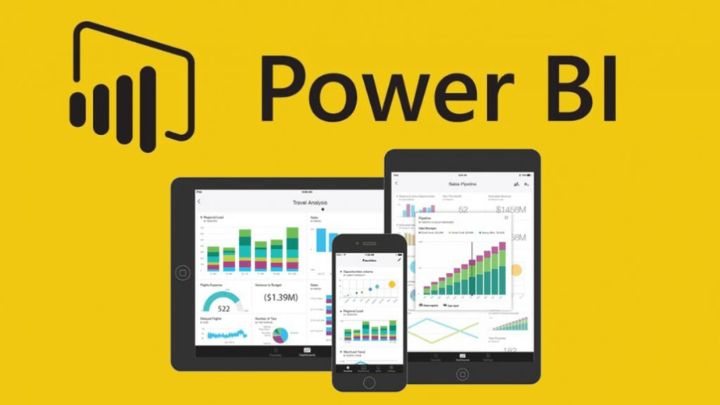Power BI is a business intelligence tool that allows users to connect to various data sources, and create interactive visualizations, reports, and dashboards. However, to learn Power BI, it is important to have a clear understanding of its core features.
Power BI includes features for data modeling, data transformation, and data analysis, which makes it a powerful tool for businesses and organizations to gain insights from their data.
It also offers a cloud-based service — Power BI Service, which allows users to share their reports and dashboards as a team, and a mobile app — Power BI Mobile, which allows users to view and interact with their data on the phone.
In this article, I will explain some of the fastest ways through which you can learn Power BI.
Read to learn more.
Introduction
Power BI is a tool that affords businesses and organizations the possibility to gain insights from their data and make data-driven decisions. With Power BI, you can easily connect with various data sources, and create interactive visualizations, reports, and dashboards.
This makes it easier for businesses to understand their data and identify trends, patterns, and areas for improvement. Power BI also allows for collaboration and sharing of data, which can aid communication and decision-making within an organization.
Also, Power BI can be integrated with other Microsoft tools and platforms, such as Excel and SharePoint, which further increases its utility.
What are the fastest ways to learn Power BI?
At first, learning Power BI may appear to be very challenging. However, if you take the right approach, you can find it relatively fast and easy to learn. The following are some of the fastest ways to learn Power BI:
Take a comprehensive course
One of the best ways to learn Power BI is by taking a comprehensive course that covers all of its essential tools and features.
You can consider enrolling in courses that cover topics such as connecting to data sources, creating visualizations, and constructing reports and dashboards.
This will ensure that you have a thorough understanding of Power BI’s key features and how to use them effectively.
There are many online learning platforms such as Coursera, Udemy, and LinkedIn Learning that offer Power BI courses. These courses are usually taught by experienced professionals and can provide a more in-depth and structured learning experience.
Practice with real-world data
Another way to quickly learn Power BI is to practice with real-world data and examples. You can gain a lot of experience by working with different types of data, such as financial, sales, or customer data.
You can work with datasets that are relevant to your field or interests and practice creating visualizations and reports with them, to help solidify your understanding and skills.
These public datasets are available on websites such as Kaggle, datahub, data.gov, World Bank Data Catalog, and so on.

Experiment with different features
Power BI offers a wide range of visualization options, including tables, charts, maps, etc., and it is important to understand how to use these options effectively. So, you should try testing with different visualizations and features to see what works best for your data.
You can also use the Power BI Desktop to create custom visualizations or use the built-in visualizations and custom visuals in the Power BI service.
Follow tutorials and documentation
Microsoft provides a wide range of tutorials and documentation on Power BI, which you can use to learn the basics and advanced features. This will give you a good introduction to Power BI and also help you understand how to use it effectively.
Join online communities and forums
Joining online communities and forums for Power BI users can be a great way to learn tips and tricks and get answers to specific questions. You can also share your projects and get feedback on how to improve them.
Watch video tutorials
Generally, video tutorials are a great way to learn as they provide a visual representation of the software and the concepts being taught.
You can find a lot of video tutorials on YouTube and other platforms that can help you learn Power BI faster and more efficiently.
Keep up with Power BI Updates
Finally, it is important to keep up with the latest Power BI developments and updates. As an evolving tool, new features are constantly being added to Power BI, so it is important to stay informed about these changes and take full advantage of its capabilities.
To stay updated, you can follow the Power BI Blog, attend Power BI webinars and events, and join the Power BI community.
FAQs
Is learning Power BI difficult?
The difficulty level of learning Power BI is not high as it is designed to be user-friendly for new learners.
However, mastering advanced features of Power BI may be challenging for those without prior BI experience
How much time Is enough to learn Power BI?
The time required to learn Power BI is typically 4-6 weeks, and this can vary depending on prior data visualization experience, use of structured learning resources, and daily learning commitment.
What are the three most essential Power BI tools?
Important tools in Power BI include Power Query for data mashup and transformation, Power Pivot for memory tabular data modeling, Power View for data visualization, and Power Map for 3D geospatial data visualization.
What are the limitations of Power BI?
Does not effectively manage huge data sources. Hence, should not be used for handling large data sources as it may result in connection and import issues, as well as slow performance and time-outs.
Conclusion: What Is the Fastest Way to Learn Power BI
Generally, learning Power BI requires both theoretical and practical learning. So, it is crucial to find a balance between both, as this will help you better understand the concepts and how to apply them in real-world scenarios.
Also, you will need a combination of online courses, hands-on practice with real-world data, experimenting with different visualizations and features, and keeping up with the latest Power BI updates.
Finally, it is important to take advantage of all the resources available, such as tutorials, documentation, and communities where users can share tips and best practices, as this will help you learn faster and become proficient in the tool.
By following these steps, you can quickly become proficient in this powerful business intelligence tool.
I hope you enjoyed reading this article.
Thanks for reading!
